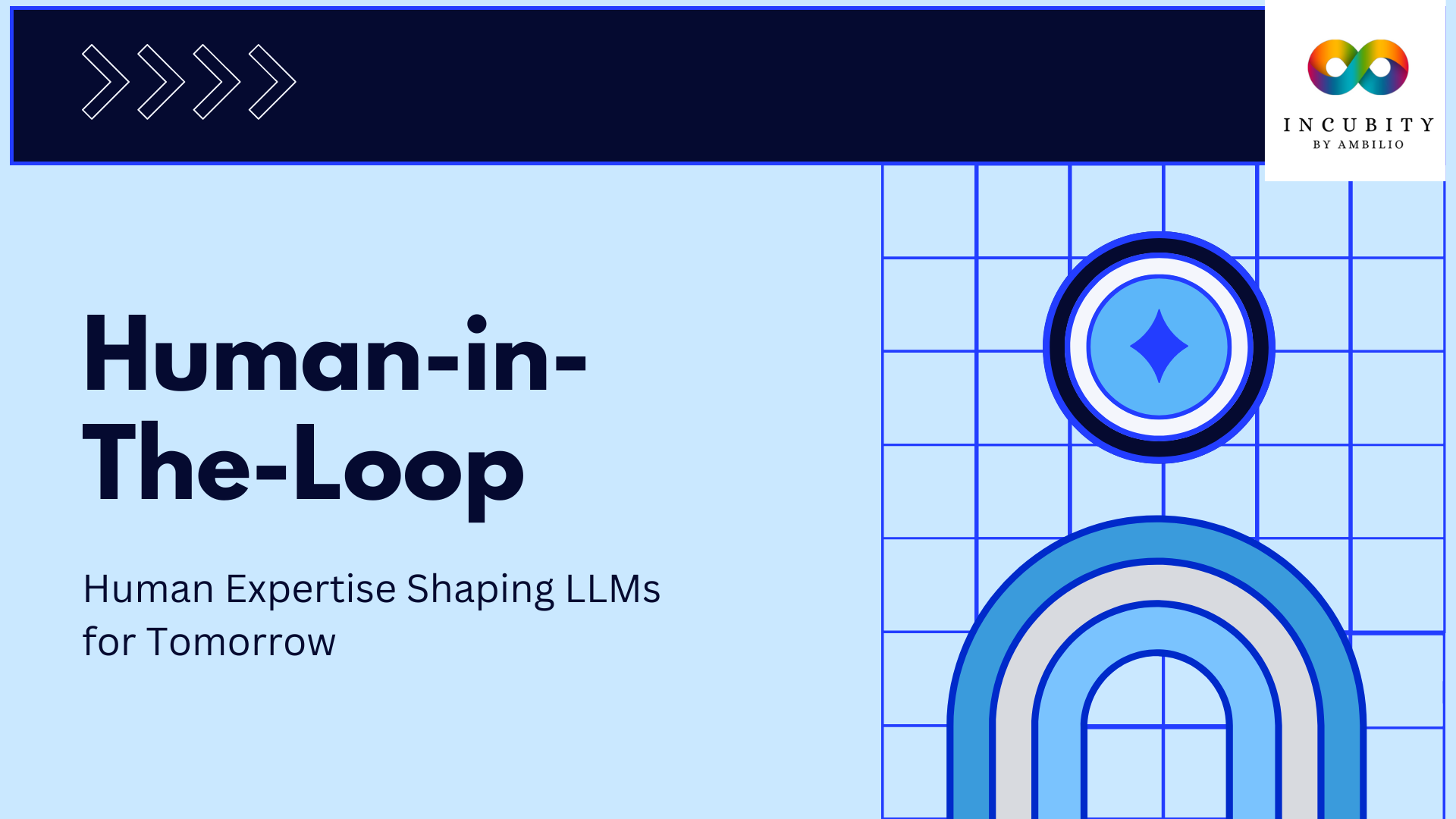The rapid advancements in large language models (LLMs) have revolutionized natural language processing, enabling machines to understand and generate human-like text. However, as these models become more sophisticated, concerns regarding responsible behavior, accuracy, and ethical considerations have come to the forefront. The human in the loop approach in LLMs emerges as a crucial methodology, integrating human expertise into the development and fine-tuning of language models to ensure their responsible and reliable use.
How it Works?
The essence of the Human-in-the-Loop (HITL) approach lies in fostering collaboration between humans and LLMs, harnessing the strengths of both to achieve results beyond what either could achieve in isolation. The process involves several key steps:
- Humans Provide Input:
- Data Labeling and Annotation: Humans play a pivotal role in tagging and categorizing data, ensuring the LLM learns from accurate and relevant information.
- Feedback on Generated Outputs: Human evaluators correct errors, provide better prompts, and refine the model’s understanding of language and context by actively assessing the LLM’s responses.
- Designing Prompts and Instructions: Crafting specific prompts and instructions guides the LLM, steering its responses toward desired outcomes.
- LLMs Process and Learn:
- Improvement of Internal Knowledge Base: Based on human input, the LLM refines its understanding of language, incorporates new information, and generates more accurate and meaningful outputs.
- Task Automation: Having learned from humans, the LLM becomes capable of handling similar tasks independently, freeing human resources for more complex endeavors.
- Continuous Iteration:
- The process is iterative, forming a continuous feedback loop. Human feedback fuels the evolution of the LLM, and the improved outputs present new opportunities for human intervention and refinement.
Benefits of Human-in-the-Loop
In the realm of large language models (LLMs), the “human in the loop” (HITL) approach emerges as a beacon of collaboration, bridging the gap between human expertise and artificial intelligence. As we delve into the advantages conferred by this symbiotic relationship, a multifaceted landscape unfolds, showcasing how HITL not only enhances the accuracy and reliability of language models but also fosters ethical considerations, adaptability to diverse contexts, and sparks innovation in problem-solving. Let’s explore the myriad benefits that arise when humans actively engage with LLMs, shaping their outputs and behaviors for the better.
- Improved Accuracy and Reliability: Human oversight mitigates biases and errors in the LLM’s training data and outputs, leading to more trustworthy and accurate results.
- Enhanced Safety and Ethics: Humans guide the LLM towards responsible and ethical behavior, addressing issues like discriminatory language or harmful misinformation.
- Adaptability to Diverse Contexts: Human interaction allows the LLM to adapt to specific tasks and situations, making it more versatile and efficient.
- Creativity and Problem-Solving: The combination of human expertise and LLM processing power facilitates innovative solutions and new ways of thinking.
Challenges of HITL
While the benefits of the human-in-the-loop (HITL) approach are abundant, the journey towards seamless collaboration between humans and large language models is not without its complexities. Navigating the integration of human involvement into the development and fine-tuning processes poses several challenges, ranging from resource constraints and scalability issues to the delicate balance of managing bias and control. As we delve into the challenges associated with HITL, we gain insights into the intricate dynamics that must be addressed to fully harness the potential of this collaborative approach in large language models.
- Resource Requirements: Integrating human involvement can be time-consuming and expensive, requiring trained personnel and effective feedback mechanisms.
- Scalability: Implementing HITL for large-scale LLM applications can be challenging, necessitating efficient workflows and scalable feedback loops.
- Bias and Control: It’s crucial to ensure human biases don’t influence the LLM, and that humans don’t exert excessive control, stifling the LLM’s potential.
Overall Impact
The HITL approach represents a promising path toward building more reliable, ethical, and impactful language models. By leveraging the strengths of both humans and machines, we can unlock the full potential of LLMs to benefit society in myriad ways. The collaborative nature of HITL ensures that language models are not only accurate but also align with ethical and safety standards.
Final Words
As we navigate the evolving landscape of language models, the human-in-the-loop approach emerges as a cornerstone for responsible and effective AI development. Through collaboration, iteration, and continuous feedback, the HITL approach ensures that LLMs are not just powerful, but also aligned with human values. As we strive to make AI a force for good, the integration of human expertise remains a crucial element in shaping the future of large language models.



